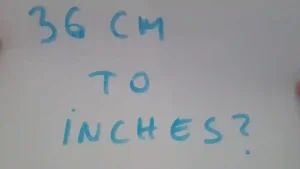Haiku Examples With Nature, Love, and Emotional Themes

Ah, haiku. Those tiny little poems that sneak up on you, like a squirrel stealing your sandwich when you least expect it. They’re short, sharp, and somehow packed with so much meaning that you wonder if the poet had a crystal ball or just spent way too much time staring at trees.
In this article, we’re diving deep into haiku examples, focusing on three classic themes: nature, love, and emotions. I’ll share my favorite bits, some quirky stories, and a handful of awkward moments I’ve had trying to write haikus myself (spoiler: it’s not as easy as it looks). Plus, I’ll sprinkle in some fun tidbits and definitely no boring lectures.
Ready? Let’s get into it.
What Exactly is a Haiku? (Just in Case You’re Wondering)
Before we jump into haiku examples, a quick refresher.
Traditionally, haikus are short Japanese poems with a strict 5-7-5 syllable pattern over three lines. That means:
- First line: 5 syllables
- Second line: 7 syllables
- Third line: 5 syllables
Simple, right? Well, not always.
What’s wild is how such a tiny structure can evoke huge feelings, paint vivid pictures, or even make you stop and think about your life choices (I’m still trying to understand mine).
And no kidding, haiku dates back to the 17th century in Japan. Matsuo Bashō, the legendary poet, made it famous by using haikus to capture fleeting moments in nature—like the sound of cicadas or the first snow on a leaf. He once wrote a haiku about a frog jumping into a pond that apparently was so good it made readers hear the splash without the noise. Now that’s poetic magic.
Haiku Examples in Nature: Tiny Poems That Feel Huge
Nature is like the OG muse of haiku. I remember as a kid trying to write a haiku about trees and ending up with “Green leaves dance in wind / Birds sing loudly from the branch / Oops, lost my pencil.”
Yeah, it was messy, but hey, we learn.
Here are some haiku examples inspired by nature that really hit home:
Classic Nature Haiku Examples
- Quiet pond at dusk,
Dragonflies skim the surface—
Evening whispers soft. - Autumn leaves falling,
A red carpet for the feet—
Time’s slow, graceful dance. - Snow clings to branches,
Silent world wrapped in white cloth—
Breath freezes in air.
Notice how each one paints a picture so clear you almost smell the crisp air or hear the soft buzz? That’s the power of haiku examples in nature.
Why Nature Works So Well for Haikus
Nature haikus capture fleeting moments, kind of like Snapchat but with words. I mean, humans have been glued to nature for centuries, maybe because it’s unpredictable and beautiful—two things that go well with poetry.
Also, nature doesn’t complain if your haiku is a bit off. My uncle tried writing one about his garden once, but he forgot the syllables and ended up with a weird nursery rhyme. Still, he got a laugh from the family—so points for effort.
Love in Haiku Examples: Short Poems, Big Feelings
Love? Oh man. That theme is both the easiest and hardest to tackle in haiku form.
Because feelings are huge and messy, trying to squeeze them into 17 syllables feels like stuffing a cat into a tiny box (don’t try this at home, by the way).
Here are some haiku examples that nail love in tiny doses:
Sweet and Simple Love Haikus
- Morning coffee warms,
Your smile lights the quiet room—
Heartbeats sync in time. - Hands gently entwined,
Words unspoken but understood—
Love speaks softly here. - First snowfall’s silence,
Like your touch on my cold skin—
Warmth that never fades.
I still remember that one time I wrote a love haiku for my crush in middle school. It ended up sounding more like a grocery list. “Red cheeks and shy smiles / Butterflies inside my chest / Oops, forgot homework.” Yep, still cringing.
How Love Changes With Haikus
Love haikus are like little snapshots, moments frozen between two people. They don’t try to explain the whole messy relationship; instead, they catch a look, a touch, or a feeling.
If you’ve ever read a haiku about love and felt your heart twitch, you get it. And if you haven’t, well… stick around. I have plenty more haiku examples that might just change your mind.
Emotional Haiku Examples: From Joy to Sadness and Everything In Between
Haikus aren’t just about pretty pictures or romance. They’re also surprisingly good at expressing emotions—sometimes raw, sometimes subtle, often weirdly comforting.
I wrote a haiku during a rainy day that went something like this:
Grey clouds swallow sun,
Heavy heart sinks with the rain—
Hope hides in puddles.
Wrote this paragraph by hand. Then spilled coffee on it. Classic.
Here are some emotional haiku examples that get that gut feeling across:
Haiku Examples of Joy and Hope
- New buds on the branch,
After the long, cold winter—
Life’s quiet promise. - Children’s laughter rings,
Echoes of pure happiness—
Sunlight through the trees.
Haiku Examples of Sadness and Longing
- Empty park bench waits,
Whispered memories linger—
Autumn winds cry soft. - Moon hides behind clouds,
Lonely night swallows my thoughts—
Tears fall without sound.
Why Haikus Work for Emotion
I guess the beauty is in the simplicity. Haikus don’t demand you spill your whole soul in paragraphs; instead, they let you drop a few words that hint at something bigger. Like a secret code for feelings.
Reminds me of that scene from House of Leaves, spooky stuff where the empty spaces between words mean more than the words themselves.
Tips for Writing Your Own Haiku Examples
Now, if you’re like me, you might be itching to write your own haikus but feel overwhelmed by the syllable count or the pressure to be profound.
Here’s the good news: it’s okay to mess up (I’m a professional mess-upper).
Try these tips:
1. Start Small and Simple
Don’t aim to rewrite Shakespeare. Think about a moment, a feeling, or an image.
- What do you see?
- What do you feel?
- What’s one thing you want to say?
2. Don’t Sweat the Syllables Too Much
Yeah, haikus are 5-7-5, but don’t get stuck counting syllables like a robot.
Focus on the rhythm and the feeling. Sometimes, a haiku is more than numbers.
3. Use Sensory Words
Make your reader see, hear, or smell what you’re describing.
Words like “whisper,” “crisp,” “shimmer,” or “buzz” work wonders.
4. Experiment With Themes
Nature is classic, but love and emotions are where you can get really personal.
Try writing haiku examples about your own weird feelings or something silly, like that time your dog stole your socks.
5. Read Other Haikus (Like These)
Reading haiku examples is like seeing different shades of the same color. It helps you find your own voice.
Bonus: Some Fun Haiku Facts You Probably Didn’t Know
Okay, since we’re being all casual and real here, here’s some trivia that made me laugh and feel kinda nerdy:
- Haiku was originally part of a longer form called “renga,” where poets took turns adding verses, kind of like the ancient version of Twitter threads. Imagine your grandpa tweeting haikus about his fishing trip.
- In the 20th century, Western poets started bending haiku rules, sometimes ignoring syllable counts altogether and focusing on the spirit of haiku instead. So, technically, you can be a rebel and still call it haiku.
- Some haikus are so short and vague they make you wonder if the poet was half asleep. But hey, that’s the beauty of it—sometimes less is more, even if it’s just “tree falls / nobody hears / silence screams” or something weird like that.
Wrapping It Up With More Haiku Examples (Because You Asked For Them!)
I promised haiku examples and you shall have them. Here’s a mixed bag from nature, love, and emotion that I think sums up why haiku is so cool:
Final Haiku Examples Roundup
- Morning dew sparkles,
Like tiny worlds on the grass—
Day begins anew. - Your laugh fills the room,
A melody in my chest—
Love’s gentle thunder. - Lonely streetlight glows,
Shadows dance with empty hopes—
Night’s quiet confessions.
Honestly, writing haikus sometimes feels like trying to catch fireflies in a jar—you get a few, some slip away, but the ones you hold glow just enough to keep you trying.
And if you ever think your haiku is terrible, just remember: even the great Matsuo Bashō probably had some bad days (or so I like to imagine).
Plus, writing haikus is kinda like talking to nature and your feelings without words spilling everywhere. Sometimes that’s all we need.
So there you go. Haiku examples from all angles. Whether you want to describe a leaf trembling in the wind, confess a secret crush, or get in touch with your emotional spaghetti, haiku can be your quirky little friend.
Give it a try. Write some haikus. Heck, write terrible ones. I know I will.
And if you spill coffee on your notebook like I did, just laugh it off. That’s poetry in motion.







